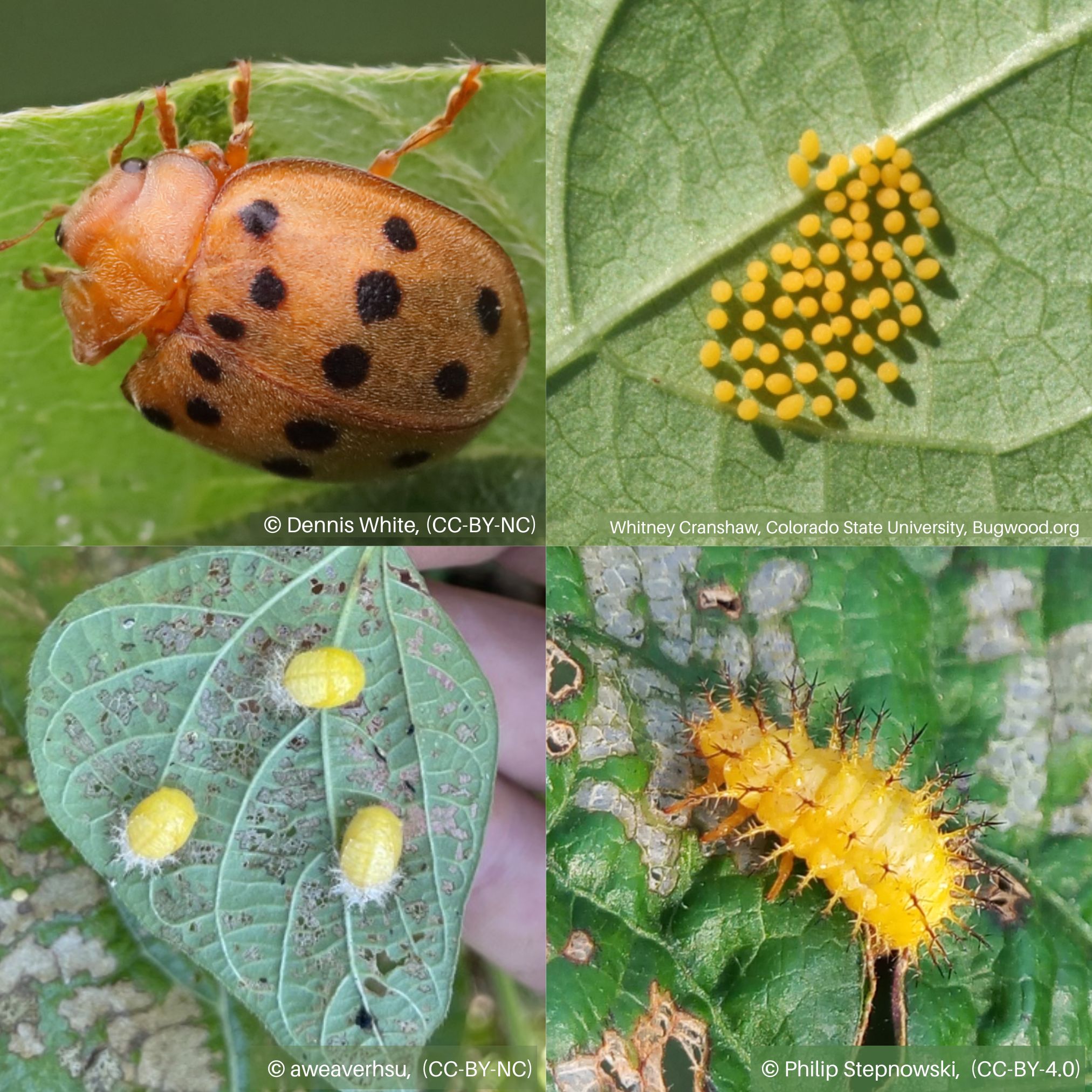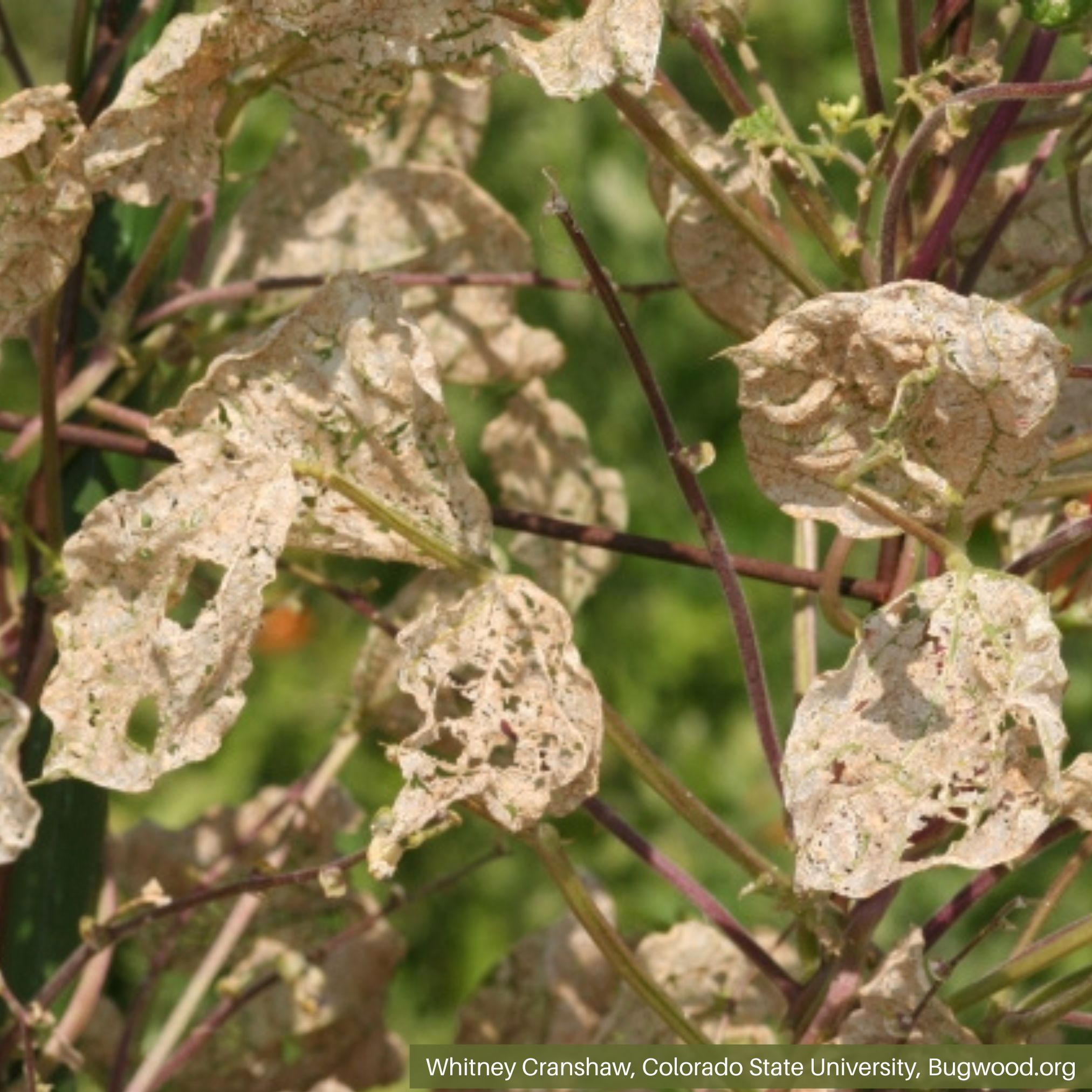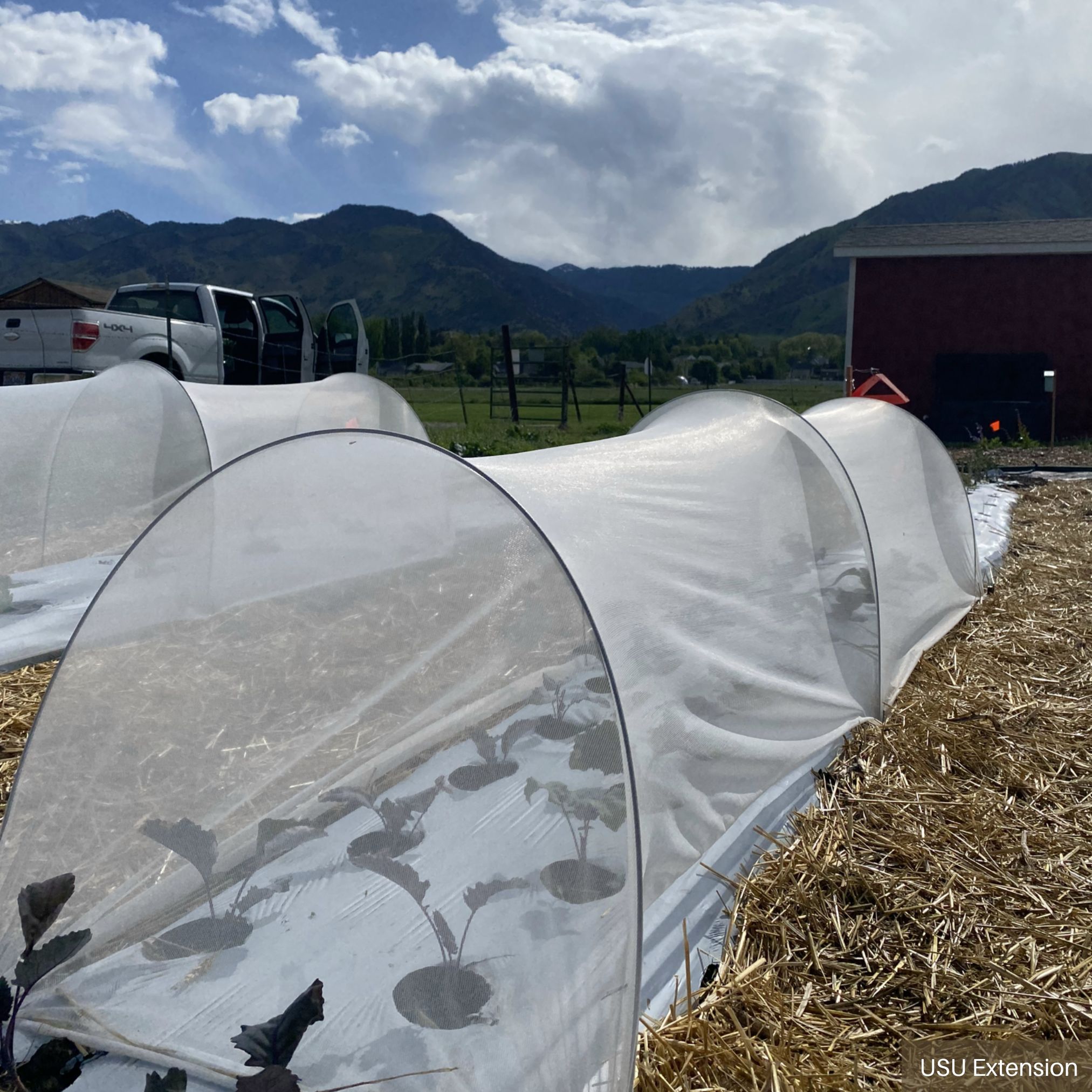Mexican Bean Beetle
 Mexican Bean Beetle Life Stages
Mexican Bean Beetle Life Stages Mexican bean beetle adult and larvae feeding on foliage.
Mexican bean beetle adult and larvae feeding on foliage. Severe leaf damage due to feeding.
Severe leaf damage due to feeding. Row covers physically exclude pests.
Row covers physically exclude pests.HOSTS
- Alfalfa
- Clover
- Beans
- Peas
OVERVIEW
The Mexican bean beetle (Epilachna varivestis Mulsant) is a species of lady beetle in the order Coleoptera. Unlike many other lady beetles who feed on other arthropods, the Mexican bean beetle feeds on plants.DESCRIPTION
Adults have orange-brown bodies with 16 black spots on their back. They are 6-8 mm long. Eggs are yellow and laid in cluster on the bottom surface of leaves. Larvae are yellow with brown bristles covering their bodies. Pupa are bright yellow and attach to the underside of leaves.BIOLOGY
Egg | Larva | Pupa | AdultAdults overwinter in woody areas near legume plants and may fly long distances to find a suitable location. Adults lay eggs in clusters of 40-60 on the underside of leaves. After hatching the larva will feed on the outer layer of leaf tissue until ready to pupate. The pupal stage is bright yellow and attaches to the underside of the leaves. Pupation takes 8 to 10 days. Mexican bean beetles have 1 to three generations per season..
SYMPTOMS
Both larvae and adults cause foliar damage through feeding.- Skeletonized foliage.
- Lace-like damage on leaves.
- Stem and pod damage.
SCOUTING
- Check the undersides of leaves for eggs, larvae, and pupae.
GENERAL MANAGEMENT
- Eggs found while scouting should be crushed by hand.
- Use legume varieties resistant to Mexican bean beetle damage, such as non-waxy varieties.
- Grow early-maturing bean varieties to avoid peak Mexican bean beetle damage in late July and August.
- Utilize row covers to keep beetles from reaching crops.
Precautionary Statement: Utah State University and its employees are not responsible for the use, misuse, or damage caused by application or misapplication of products or information mentioned in this document. All pesticides are labeled with ingredients, instructions, and risks, and not all are registered for edible crops. “Restricted use” pesticides may only be applied by a licensed applicator. The pesticide applicator is legally responsible for proper use. USU makes no endorsement of the products listed in this publication.

